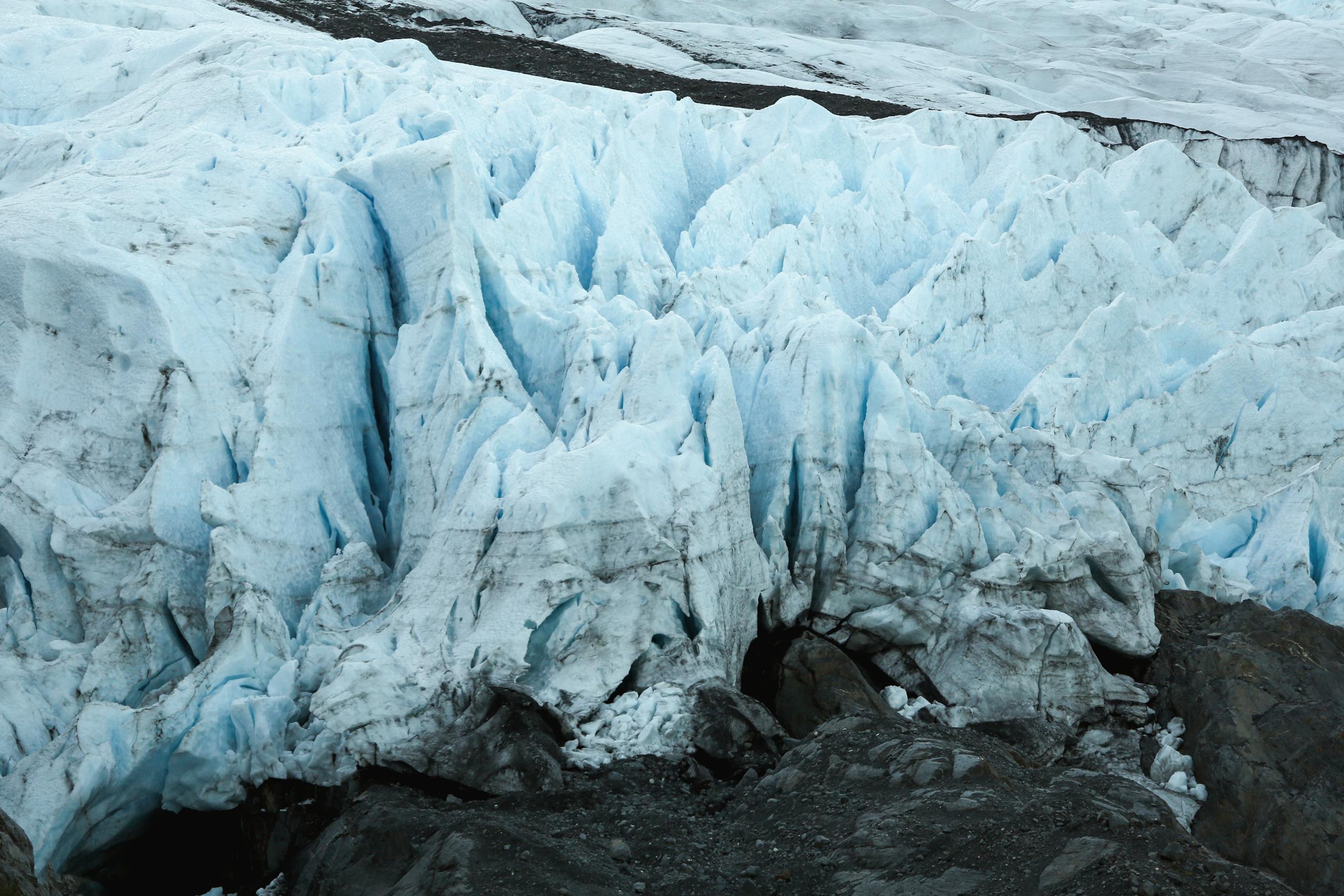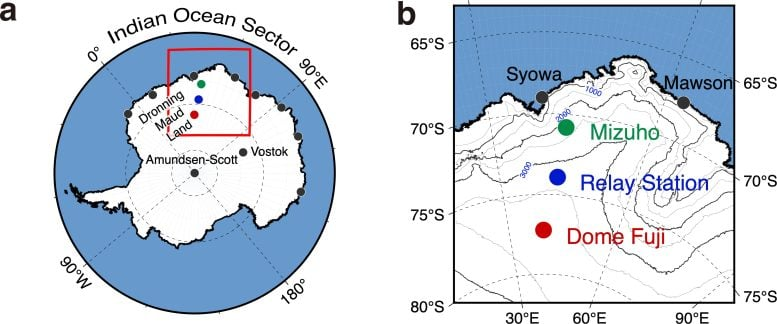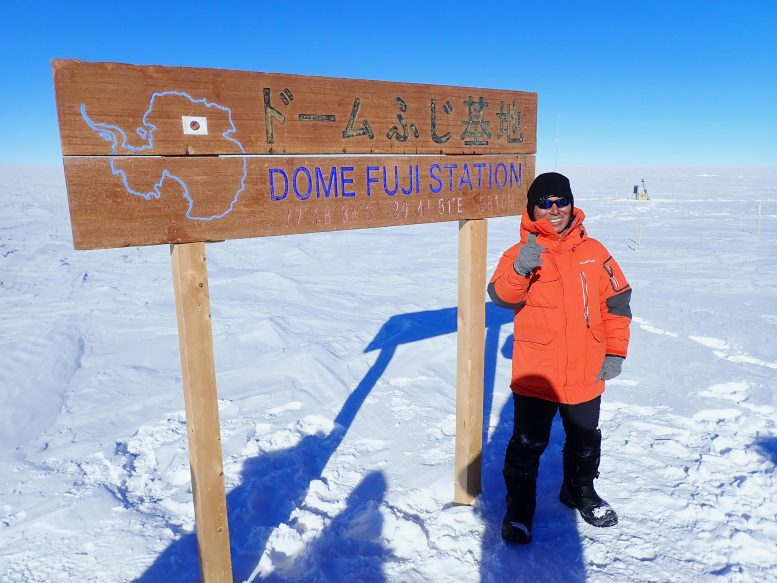A 30-Year Study Uncovers a Hidden Climate Driver Heating East Antarctica’s Core

For decades, scientists thought the deep interior of East Antarctica was too isolated to be warming at the same pace as other regions of the world. But a new 30-year investigation, published in Nature Communications in July 2025, shows that the heart of East Antarctica is heating up much faster than expected—and the reason lies thousands of kilometers away in the Southern Indian Ocean. This discovery challenges long-held assumptions about Antarctic stability and raises concerns about how much ice—and therefore sea level—may be at risk in the future.
In this article, I’ll walk you through the specific findings of the study, explain the climate processes behind it, highlight why this matters for global sea levels, and add some extra context about Antarctica and its role in Earth’s climate.

Filling a Blind Spot in Antarctic Observations
Antarctica is the coldest, driest, and windiest continent on Earth. It also locks away about 70% of the planet’s freshwater in its vast ice sheets. Monitoring its climate is not easy—harsh conditions and extreme remoteness mean that most research stations sit along the coast, where access is somewhat less challenging.
That left the interior of East Antarctica, which holds the bulk of the continent’s ice, largely an observational blind spot. Until now, only four staffed stations have operated in this immense inland region, and only two of those—Amundsen-Scott (at the South Pole) and Vostok Station—offer long-term climate records.

To fill this gap, researchers relied on three unmanned automatic weather stations that have quietly been collecting data since the early 1990s: Dome Fuji Station, Relay Station, and Mizuho Station. These remote stations are engineered to survive temperatures below –70°C and record year-round climate data without human presence. By pooling their records, scientists created a continuous dataset covering 1993 to 2022, offering the clearest look yet at how East Antarctica’s hidden core is changing.
How Fast Is the Interior Warming?
The results are striking. Between 1993 and 2022, the annual average temperatures at all three inland sites rose at a rate between 0.45°C and 0.72°C per decade. That’s faster than the global average warming rate over the same period.
The warming is not uniform throughout the year. It is especially pronounced during the austral spring and summer months (October through March), when solar radiation is higher and atmospheric conditions more easily transport warm air southward. This is important because surface melting of ice is more likely in the warmer half of the year, even in Antarctica’s frigid interior.
Meanwhile, coastal stations in East Antarctica have not yet shown statistically significant warming trends. This means the warming is currently concentrated in the interior, but scientists caution that this may change soon.
The Surprising Culprit: The Southern Indian Ocean
So what is driving this hidden warming trend? The research team traced it back to the Southern Indian Ocean, particularly to shifts in sea surface temperatures (SSTs) and oceanic fronts—zones where warm and cold waters collide.
Here’s what’s happening step by step:
- Uneven Ocean Warming: Global warming does not heat the oceans evenly. In the Southern Indian Ocean, the Subtropical Frontal Zone (STFZ)—a sharp boundary between warm subtropical water and colder sub-Antarctic water—has become 20% sharper over the past 30 years. This means the temperature difference across the front has intensified.
- Atmospheric Storm Activity: Sharper ocean fronts strengthen atmospheric baroclinicity, which basically fuels more storm activity and circulation changes in the mid-latitudes.
- Dipole Pressure Pattern: These changes create a meridional dipole pattern—a setup where there’s low pressure in the mid-latitudes and high pressure over East Antarctica.
- Warm Air Advection: This high-pressure system over Antarctica draws warm air masses inland, transporting heat far into the icy heart of the continent.
The result? The interior of East Antarctica warms faster than its coastlines, even though coastal regions are much closer to open ocean.
Why Climate Models Missed This
Climate models are sophisticated, but they are not perfect. According to the researchers, most current models do not properly simulate this Indian Ocean–Antarctica link. That means projections of Antarctic climate change and ice sheet stability may be too conservative.
If models underestimate warming in the East Antarctic interior, they may also underestimate how quickly the ice sheet will respond. Given that East Antarctica contains the majority of Earth’s glacial ice, this knowledge gap has serious implications for global sea level rise forecasts.
Why Coastal East Antarctica Hasn’t Warmed Yet
One question naturally arises: if warm air is being drawn deep inland, why aren’t coastal stations showing the same strong warming trends?
Researchers suggest several reasons:
- Orographic blocking: The continent’s towering ice sheet topography can deflect or block warm inland air from reaching coastal areas.
- Sea ice buffering: Thick and extensive sea ice near the coast helps regulate heat exchange between the ocean and atmosphere, masking some of the warming.
But the study warns that the strengthening warm air flows observed in recent decades could eventually spill over to coastal stations. If that happens, surface melting and ice weakening may spread outward from the interior toward the coasts.
The Role of Natural Climate Variability
Not all of this can be attributed directly to human-caused climate change. The researchers note that multi-decadal climate variability also plays a role.
In particular, the Interdecadal Pacific Oscillation (IPO)—a long-term fluctuation in Pacific Ocean conditions—entered a negative phase in recent decades. This enhanced the Indonesian Throughflow, sending more warm water into the Indian Ocean. That additional heat contributed to the Southern Indian Ocean’s warming and the sharpening of the STFZ.
So the current interior warming likely comes from both natural variability and anthropogenic warming. Human-driven greenhouse gas emissions are heating oceans overall, while internal climate cycles shape how and where that heat is distributed.
Why This Matters Globally
The big picture is clear: East Antarctica is not as immune to warming as once thought. If the interior continues heating at this pace, and if coastal areas soon follow, it could lead to:
- More frequent surface melting of the ice sheet.
- Faster ice mass loss, particularly if meltwater lubricates ice flow toward the ocean.
- Higher global sea level rise than currently projected by models.
For context, East Antarctica alone contains enough ice to raise sea levels by tens of meters if it were to melt completely. While no one expects such an outcome anytime soon, even small increases in ice sheet vulnerability translate into measurable sea level rise that can reshape coastlines around the world.
Antarctica: A Quick Background
To fully grasp the importance of these findings, it helps to know a bit more about Antarctica:
- Size and ice volume: Antarctica covers about 14 million square kilometers and holds an estimated 26.5 million cubic kilometers of ice.
- East vs West Antarctica: East Antarctica is larger and was long thought to be more stable, while West Antarctica has been considered more vulnerable because much of it rests on bedrock below sea level. This new research challenges the assumption of East Antarctica’s relative stability.
- Freshwater storehouse: If all Antarctic ice melted, sea levels would rise by nearly 58 meters globally. East Antarctica alone accounts for the majority of that potential rise.
- Climate importance: The continent influences global weather patterns through its vast ice sheet, reflective albedo, and the cold, dense waters it contributes to ocean circulation.
The Road Ahead for Research
This study is a wake-up call for climate science. It shows how remote ocean changes can directly affect Antarctica’s interior, a link that was previously underappreciated. Going forward, researchers emphasize:
- The need for expanded monitoring networks in Antarctica’s interior. More automatic weather stations, satellites, and field campaigns can help reduce the uncertainty.
- Improving climate models so they capture the Indian Ocean–Antarctic connection. Without it, projections of sea level rise risk being overly optimistic.
- Investigating whether similar mechanisms exist in other ocean basins, such as the southern Atlantic or Pacific, which might influence other parts of Antarctica.
Final Thoughts
The idea that the deepest, coldest parts of East Antarctica are heating faster than the coastlines may seem counterintuitive, but the evidence is strong. A combination of warming Southern Indian Ocean waters, shifting atmospheric patterns, and natural climate cycles has conspired to push warm air into the continent’s icy core.
This is more than a scientific curiosity—it’s a reminder that the climate system is deeply interconnected. What happens in one ocean basin can ripple all the way to the coldest place on Earth. And when that place holds most of the planet’s ice, the implications stretch to every coastline worldwide.





